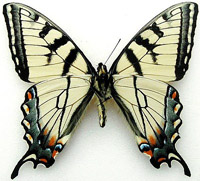Lepidoptera Survey
Date of this Version
8-12-2001
Document Type
Article
Citation
Taxonomic Report of the International Lepidoptera Survey (August 12, 2001) 3(3): 1-8
Also available at https://lepsurvey.carolinanature.com/ttr/ttr-3-3.pdf
Abstract
The name Satyrium liparops liparops has traditionally been applied to all liparops populations from eastern Georgia southward. This tradition is shown to be in error. The type locality of nominate liparops is restricted by original description to Screven County, Georgia. A neotype is designated from Screven County and deposited in the Museum of the Hemispheres (MOTH) collection Goose Creek, South Carolina. The range of nominate liparops is projected to be from coastal South Carolina across the far southern United States (including the Florida panhandle) and into Texas. The population in west central peninsular Florida is described as new subspecies S. l. floridensis type locality Withlacoochee State Forest, Citrus County, Florida. The floridensis holotype is deposited in the MOTH collection Goose Creek, South Carolina. Specimens from Alachua County, Florida, to southeast Georgia are intermediate to these two subspecies. Satyrium l. floridensis always has medium to large yellowish burnt-orange patches on the forewings in both sexes. The forewing patch on liparops liparops is red-orange and varies from fairly large to none, with most specimens having no patch. Both southern subspecies have long tails. The ventral ground color in S. l. floridensis is deep chocolate brown in both sexes. In S. l. liparops the ventral ground color is medium to dark brown in males and somewhat lighter in females. This coloration is as it occurs in fresh specimens.


Comments
Copyright 2001, International Lepidoptera Survey. Open access material
License: Creative Commons Attribution-ShareAlike-NonCommercial 4.0 International (CC BY-SA-NC 4.0 International)